The defeat of the group "Zemland". Storm Pillau
The position and strength of the parties
THE USSR. In order to immediately break down the enemy’s strong defense and not drag out hostilities, Marshal Vasilevsky decided to draw five combined arms armies into the operation. The 2nd Guards, 5th, 39th and 43rd armies were in the first echelon, the 11th Guards Army in the second. For this, a regrouping of forces was carried out: the front, which was previously occupied by the 2nd Guards and 5th Armies, was strengthened by the 39th Army, the 43rd Army was deployed on the southern coast of the Frishes-Huff Bay, and the 11th Guards Army was withdrawn to the frontal reserve . The troops of the 3rd Belorussian Front totaled more than 111 thousand people, more than 3 thousand guns and mortars, 824 tank and self-propelled guns. As a result, at the beginning of the manpower operation, Soviet troops almost doubled the enemy, 2,5 times in artillery, almost 5 times in tanks and self-propelled guns.
Taking into account the small length of the front and the small number of units and formations of the army, narrow strips were obtained for the offensive. The largest was the 2 th Guards Army band - 20 km, but it had an advantage, the Chanchibadze army occupied these positions for two weeks and managed to study the terrain, the enemy defenses and prepare for the offensive. The rest of the army had a line of attack on 7-8 km. The main blow was inflicted by the 5-I and 39-I armies with the direction to Fishhausen, to cut the enemy group into two parts and then eliminate it. 11-I Guards Army was to develop the success of the two armies. The 2-I Guards and 43-I armies supported a general offensive on the flanks, advancing along the northern and southern coast of the peninsula of Zemland.
The Baltic Fleet was supposed to cover the coastal flanks of the troops of the 3rd Belorussian Front; to cover marine communications with light forces and submarines and carry out patrol service; land tactical assault forces behind enemy lines; maintain landing forces with artillery fire and stop the evacuation of the enemy by sea. Aviation fleet was supposed to inflict massive strikes on enemy naval communications and support landing forces.
Germany. The western part of Zemland Peninsula was defended by 9 and 26 army corps, which included 7-8 infantry and one tank division. Taking into account the combat groups and other parts of the enemy forces reached the 10 divisions. Soviet troops were opposed by more than 65 thousand soldiers and officers, 1200 guns and mortars, 166 tanks and assault guns.
In addition, the 55 army corps (three or four divisions and a number of special units) were located on the Pillaus peninsula in the second echelon, the XRUMX army corps was quickly rebuilt from the remnants of the Heilsberg group on the Frische-Nerung spit. All German troops were merged into the 6 Army, and from April 2 into the Army "East Prussia". The army was created on the basis of the headquarters and some parts of the 7 army and the remnants of the units of the 2 army, located on the territory of East and West Prussia. The commander of 4 of the German army, General Muller, was removed from his post and replaced by General Dietrich von Zauken.
The German command was waiting for the main attack on the central and southern directions, therefore the most dense battle formations were located here: 93-I, 58-I, 1-I, 21-I, 561-I and 28-I infantry and 5-I tank divisions, that is, about 70-80% of the first-tier troops. The Germans had a well-developed defense with a dense network of trenches, strong points and resistance nodes. Strong defensive lines were located on the Pilous Peninsula. The city of Pillau was a strong fortress.
The first stage of the offensive
On the morning of April 13, strong artillery preparation began. At the same time, the 1-I and 3-I air armies struck the enemy’s positions. After an hour of artillery preparation, the troops of the 3 of the Belorussian Front launched an offensive. Soviet armies broke through the enemy defenses. True, the offensive was not developed according to the original plan.
In the afternoon, the German resistance intensified. The Germans launched a series of counterattacks at the 5 and 39 th armies of Krylov and Lyudnikov. By the end of the day, Soviet troops advanced 3-4 km, capturing about 4 thousand Germans. The next day, the battle continued with great bitterness. The German command, having guessed the command of the command of the 3 of the Byelorussian Front, strengthened the defenses in the direction of the offensive of the 5 and 39 armies. At the same time, in order to save the northern part of the group, the Germans quickly began to withdraw troops in front of the front of the 2 Guards Army. As a result, in three days of fighting, our troops on the main line advanced only 9-10 km, and the right flank of the 2 Guards Army of Changchibadze went 25 km and reached the coast.
The 2 Division of the Baltic Fleet's armored cruisers rendered great assistance to the Soviet troops. Baltic sailors broke into Frisches-Huff Bay and the Koenigsberg Sea Canal, made sudden strikes, suppressing enemy firing points, hindering the advance of ground forces. Naval aviation and a group of naval railway artillery, made massive strikes at the enemy. 15 and 16 April 1945 was the successful landing of tactical landings of the 24 Guards Rifle Division on the dam of the Königsberg canal in the Pice-Zimmerbud region. The landing and fire support of armored boats allowed the troops of the 43 Army to clear the Nazis of Pays and Zimmerbud, the dam of the canal from the Nazis. This created favorable conditions for the offensive of the Red Army along the coast of the gulf.
The loss of defensive lines and heavy losses forced the German command 15 of April to abolish the control of the Zemland task force and the remnants of its troops to subordinate to the command of the army of East Prussia. The German command, trying to save as many troops as possible, made desperate efforts to evacuate people. Sea transport worked around the clock. All free watercraft were mobilized from the coast of the Baltic Sea, the lower reaches of navigable rivers remained in the hands of the Germans. Ships pulled into the bay of Danzig. However, here they were subjected to massive strikes of Soviet aviation and suffered significant losses.
The 2 th Guards Army movement along the Baltic coast to the south and the 39 and 5 armies in the general direction to Fishhausen forced the Germans to pull troops into the southwestern part of the peninsula and organize defense on a narrow front. On the night of April 17, our troops took a strong knot of resistance to the enemy Fischhausen. The remnants of the German Zemland group (about 20 thousand soldiers) retreated to the Pillau area and entrenched themselves in a prepared position. The offensive of the Soviet troops was suspended.
Thus, within five days of the offensive, our troops cleared the Zemland Peninsula from enemy troops, and reached the first line of defense of the Pilaus Peninsula, whose front was equal to 2-3 km. Here the enemy had the opportunity to maximally compact the battle formations, and it was impossible to bypass him. The onset of the front has stopped. On the one hand, our troops won, reached the coast and liberated the territory. On the other hand, it was not possible to crush and encircle the enemy troops. The German command removed from the strike the northern part of the Zemland group and led the troops back to the previously prepared positions on the Pillaus peninsula. German troops remained operational, continued to fight hard and skillfully, although they suffered serious losses. The current situation threatened to delay the operation. Required to enter the battle of fresh forces.
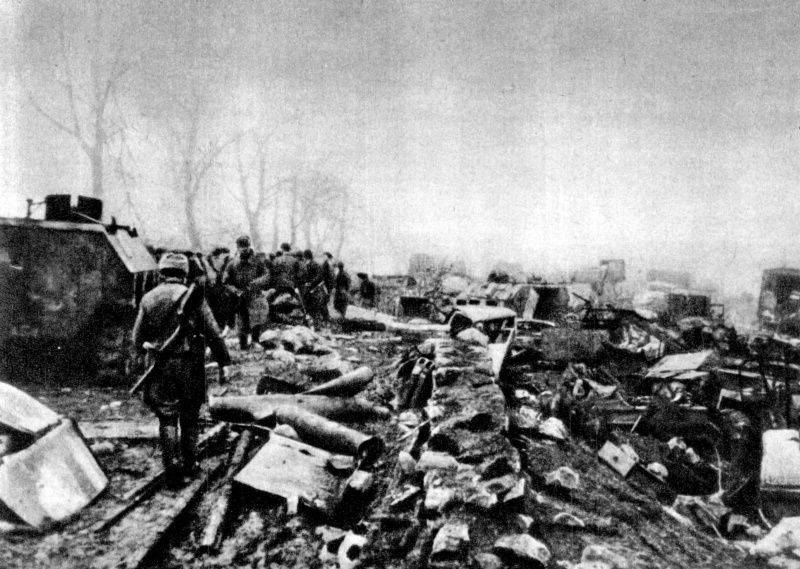
Broken machinery of the German army on the Zemland Peninsula
Mortar calculation 11-th Guards Army in the firing position on the outskirts of Pilau
The second stage of the operation. Storm Pillau
The Soviet command decided to enter into battle the 11 th guards army of Galitsky. 16 April Vasilevsky ordered the 11 Army to replace the troops of the 2 Guards Army and April 18 to launch an attack on Pillau and the Frische-Nerung Spit. 5-th, 39-th and 43-th army also brought into the reserve of the front.
The command of the 11 Guards Army decided to strike at the external flanks of the enemy, break through its defenses and develop the offensive with second echelons of corps. By the end of the second day, with the support of amphibious assault forces, they planned to take Pillau. On the night of April 17, the divisions of the 16 and 36 of the Guards Rifle Corps began their nomination.
The Pillaus peninsula had a length of about 15 km and a width from 2 km at the base to 5 km at the southern tip. German troops erected here six defensive positions, which were located one from another in 1-2 km. There were also pillboxes with armored caps. On the northern outskirts of Pillau there were four fortress fortresses and a sea fortress, on the north bank of the Frische-Nerung Spit - two forts. Finding out that the enemy has a serious defense, the beginning of a new offensive was postponed to April 20. 18 April Soviet troops conducted reconnaissance in force. 19 April intelligence continued. It turned out that in front of us are parts of three or four divisions that support artillery and mortar batteries near 60, up to 50-60 tanks and self-propelled guns, several warships from the Pillau raid and the sea.
In 11 hour. 20 April 1945 d. 11-th Guards Army launched an offensive. However, despite strong artillery preparation (600 trunks) and air support (more than 1500 sorties), the enemy’s defenses did not immediately break. Our troops advanced only 1 km, capturing the 2-3 trench lines. On the second day of the operation, the situation did not improve. The enemy’s positions were hidden by the forest, which made artillery difficult, and the fire on the squares had little effect. The Germans defended the last stronghold in East Prussia with particular stubbornness, went over to counterattacks by forces up to the infantry battalion, supported by tanks and assault guns. On the second day, the weather deteriorated, which reduced the activity of our aircraft. In addition, the forces of the German group underestimated, believing that after the defeat of the Zemland group the victory was already secured.
On April 22, on the left flank of the army, the 8 Guards Corps was brought into battle. On the third day of the fierce battles the Germans pushed 3 km. The German command threw into battle the remnants of the previously defeated divisions, all the units and subunits at hand. The narrow line of defense was saturated to the limit with firepower, which made it difficult for our troops to advance. For every 100 meter, on average, there were 4 machine guns and 200 soldiers with automatic weapons. Here the Germans had reinforced concrete and armored pillboxes, concrete platforms for heavy guns, including caliber 210 mm. The German defense had to literally “gnaw”, meter by meter. And the closer the Soviet troops approached Pillau, the more the long-term structures became. All the stone buildings of Pillau and its suburbs, where there were almost no wooden buildings, were adapted to the defense. Other large buildings were so well prepared for defense that they hardly differed from the fortress fortifications. On the lower floors installed guns, positions of anti-tank grenade launchers, on the top - machine-gun nests. The fortress had a three-month supply and could be under siege for a long time. The Germans constantly counterattacked, all the buildings had to be taken by storm. The correlation of forces, especially in bad weather, when aviation was inactive, was almost equal.
Therefore, the battles were extremely fierce and stubborn. 22 April 1945 of the year, on the approaches to Pillau, died the hero of the storming of Konigsberg, the brave commander of the 16 Guards Rifle Corps, Major General Stepan Savelievich Guryev. S. Guryev began serving as a Red Army soldier during the Civil War, already as a regiment commander participated in battles with Japanese troops in the Khalkhin Gol river area. He fought since the beginning of World War II. He was the commander of 10-th airborne brigade, then commanded the 5-m airborne corps, distinguished himself in battles near Moscow. Bravely and skillfully led the 39-th Guards Division in the battle of Stalingrad. He then commanded the 28 and 16 guards corps. For the skillful leadership of the troops and personal bravery in the storming of Konigsberg, he was awarded the title Hero of the Soviet Union. In 1946, in the Kaliningrad region, the city of Neuhausen was renamed in honor of the deceased hero Guryevsk and formed the Guryevsky district.
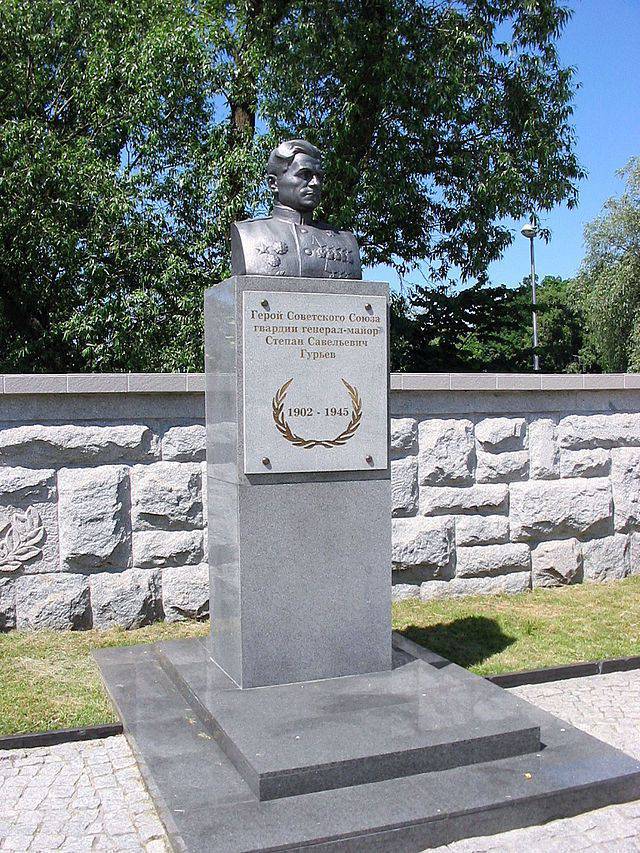
Monument at the grave of the Hero of the Soviet Union S. S. Guriev at the 1200 memorial to the guards in Kaliningrad
I must say that Marshal Vasilevsky himself almost died in this operation. He went to the observation post of the army in Fishhausen, whose area was regularly fired upon by enemy artillery, and was hit by a raid. Vasilevsky's car was broken and he survived by luck.
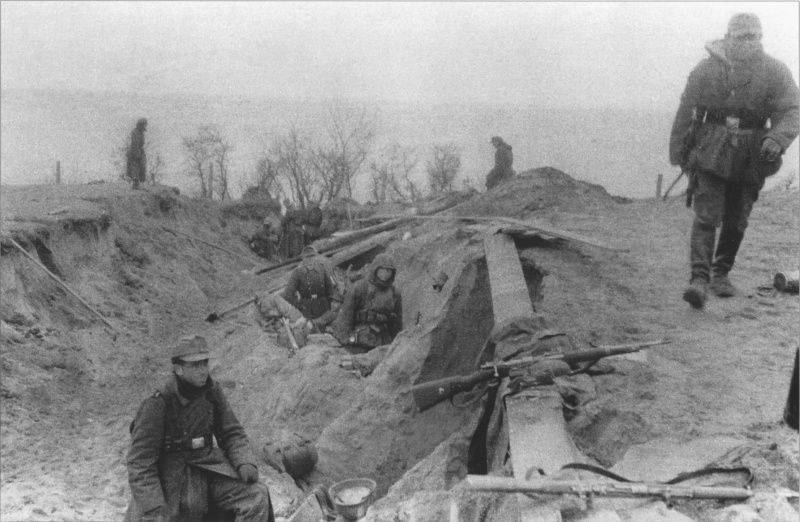
German soldiers in an anti-tank ditch at Lohshtedskogo forest. One of the many lines of defense in front of the sea fortress Pillau
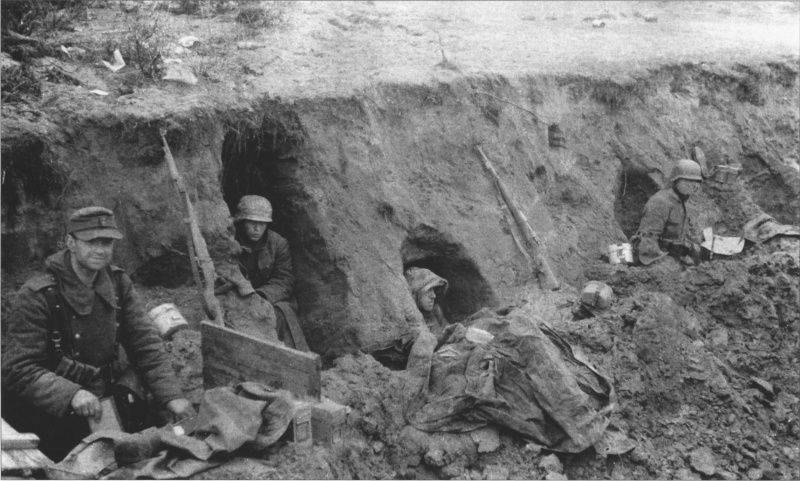
German soldiers in the shelters dug in the slopes of the anti-tank ditch in Lohshtedskogo forest
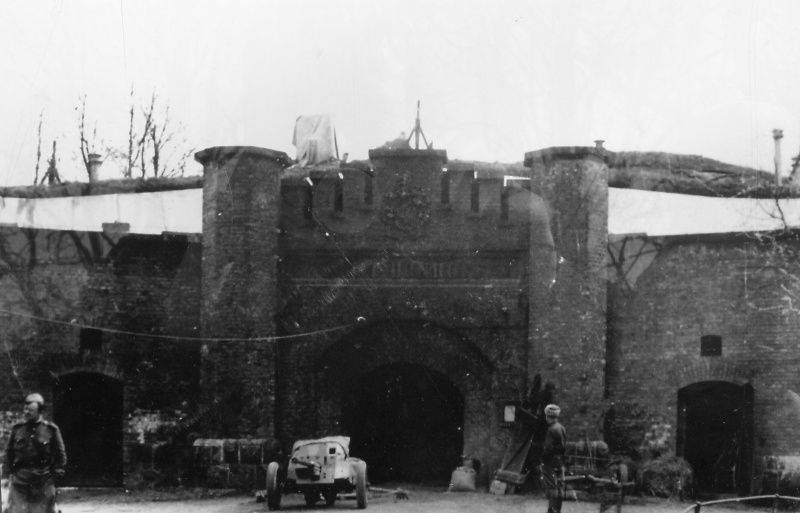
Soviet soldiers at Fort Vostochny in Pillau
On April 24, our troops, despite the desperate resistance of the enemy, who threw into battle the most combat-ready units, including the marines supported by tanks, took Neohoser. The stubborn battle for this stronghold, which covered the approaches to Pillau, lasted almost a day. On the night of April 25, our troops went around the sea fortress from the east, on the right flank they started a battle at the nearest approaches to Pillau. 25 April, Soviet troops launched an assault on Pillau. The German command understood that the fortress was doomed, but tried to gain time to evacuate as many troops as possible by sea or to the Frische-Nerung spit. In addition, the stubborn defense Pillau wanted to somehow influence the development of the situation in the Berlin sector. The fortress garrison itself was small, but a significant number of field troops and various headquarters moved to the city. The Pillau garrison was supported by serf and field artillery from the northern part of the Frische-Nerung Spit and 8-10 artillery of warships and sea boats.
The commander Galitsky ordered the 16 Guards Corps to take the fortress on the southwestern tip of the peninsula, to force the Zeytif strait and go to the bridgehead on the Frische-Nerung spit; The 36 Corps take the south-eastern region of the city and also force the strait; The 8 Corps is to liberate the eastern harbor and, having crossed the strait, capture the Noytyf stronghold (there was a German airbase located there).
On April 25, Soviet troops, who had a wealth of experience in city battles, and especially the storming of Koenigsberg, cleared the outskirts and broke through to the center of the city. The assault groups took the buildings, punched holes in the walls, undermined particularly fortified houses and took Pillau step by step. For the Germans remained only the coastal part in the southwestern part of the city and the fortress. 26 April and took the fortress Pillau. Upgraded old fortress, which had 1-thousand. garrison, did not succumb to the mid-caliber artillery. Multimeter brick walls and arched ceilings withstood shells of medium and even large calibers. The gates were laid with bricks and concrete blocks. The form of the fortress in the form of a multipath star made it possible to conduct a flanking fire. Strong artillery and machine-gun fire from numerous embrasures, the Germans rejected our troops. The garrison rejected the ultimatum of surrender. Only by pulling dozens of heavy-caliber guns, tanks of the 213 th brigade and heavy SPGs with 152-mm guns that were focused on enemy defenses were able to weaken. The gates and barricades were swept away. At nightfall, the soldiers of the 1-th Guards Rifle Division went on a decisive assault. The guardsmen, having filled up the 3-meter-ditch with fascines, planks and various improvised means, came to the walls and began to climb walls along the stairs, broke into the breaches. Inside the fortress began the melee with the use of grenades, tolovyh drafts and flamethrowers. After a fierce battle, the German garrison being destroyed began to surrender.
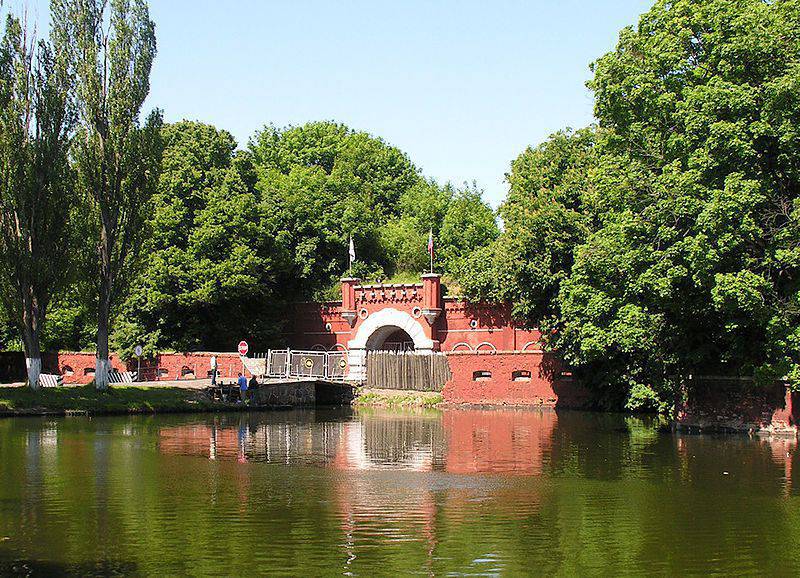
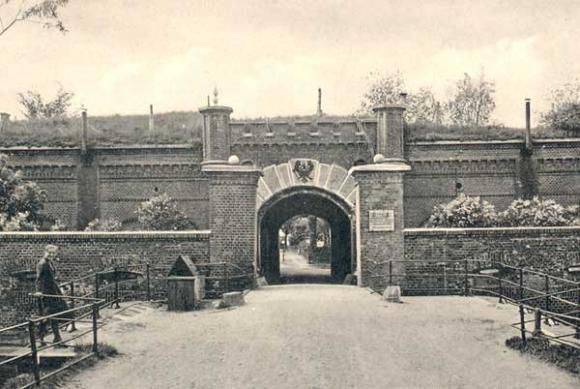
Fortress Pillau
Completion of the operation. Fights on the spit Frische-Nerung
Already on April 25, our forces forced the passage of the Zeetif Strait. Under the cover of artillery barrage and a powerful strike by heavy bombers, as well as a smoke screen, amphibians of Captain Gumedov and the 2 Battalion of the 17 Infantry Regiment under the command of Captain Panarin were the first to cross the amphibian. The guardsmen swiftly seized the first trench of the enemy and withstood the counterattack of the German troops who were trying to throw the first echelon into the water. The first to land was a platoon of infantry, Junior Lieutenant Lazarev. He captured the bridgehead and stood to death, even the wounded refused to leave, continuing to shoot. Lieutenant Lazarev was wounded twice already during the crossing, the third wounded in battle with the Germans. However, the hero refused to leave and continued to fire with a machine gun, the calculation of which died, destroying the Germans before 50. Only when Lazarev fainted was he taken away. The first guardsmen who captured the bridgehead on the spit - Yegor Ignatievich Aristov, Savely Ivanovich Boyko, Mikhail Ivanovich Gavrilov, Stepan Pavlovich Dadaev, Nikolai Nikolaevich Demin and commander of the battalion junior sergeant Vasily Alexandrovich Eremushkin were awarded the title Hero of the Soviet Union.
The second echelon, the main forces of the 17 regiment led by its commander Lieutenant Colonel A.I. Bankukov, moved on the first echelon on boats, boats, barges and other floating craft. At night, parts of the 5 Guards Division crossed the strait and expanded the bridgehead. K 11 hour. April 26 was taken strong point Naytoyt. They also forced the strait and captured the bridgeheads of the troops of the 84 and 31 divisions. This allowed the morning to organize the transfer of heavy weapons and begin construction of a pontoon ferry, which was ready for the morning of April 27.
To speed up the operation on the spit, two landings were successfully landed. The western detachment led by Colonel L. T. Belyi (units of the 83 Guards Division - about 650 fighters) - from the open sea and the Eastern Detachment of Rear Admiral N. E. Feldman (regiment of the 360 Brigade of the Marine Corps and the combined rifle 43 Army Regiment) - from the Frisches-Huff Bay. A western assault force landed in the area southwest of Lemberg (3 km south of the Zeethif strait). Eastern detachment landed in the area of Cape Kaddih Haken two echelons.
Using several high-speed barges, which were armed with 88-mm guns, the enemy tried to disrupt the Soviet landing operation. The Germans were able to damage two minesweeper boats. But the attack of our armored cars forced them to retreat. The attack of our landing was not expected, and the paratroopers quickly captured the bridgehead. However, then much superior enemy forces attacked the guards, and they had to fight hard. White's guards in the morning repulsed the 8-10 attacks of the German troops. Only after the landing of the first echelon of the Eastern detachment and the approach of the troops of the 5-th and 31-th Guards Division, the paratroopers became easier. In general, the landing forces, although taking into account a number of mistakes, coped with their task. Distracted the enemy to themselves, disorganizing his defense.
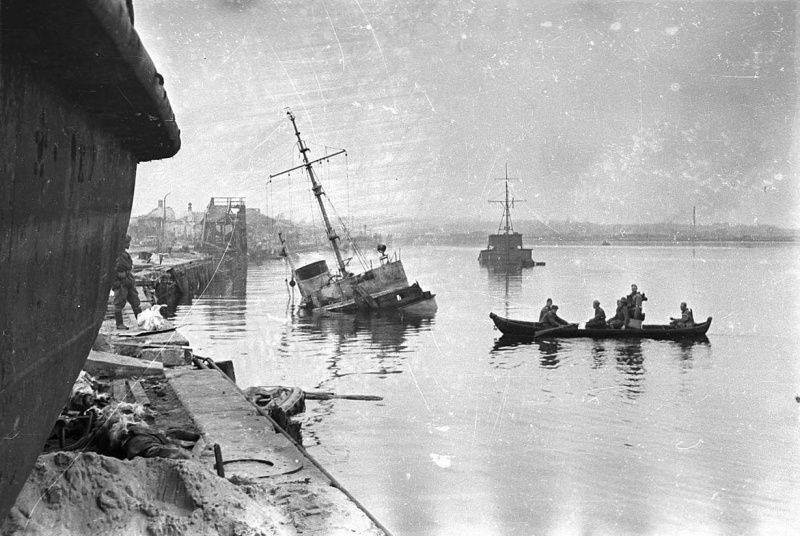
In the liberated Pillau
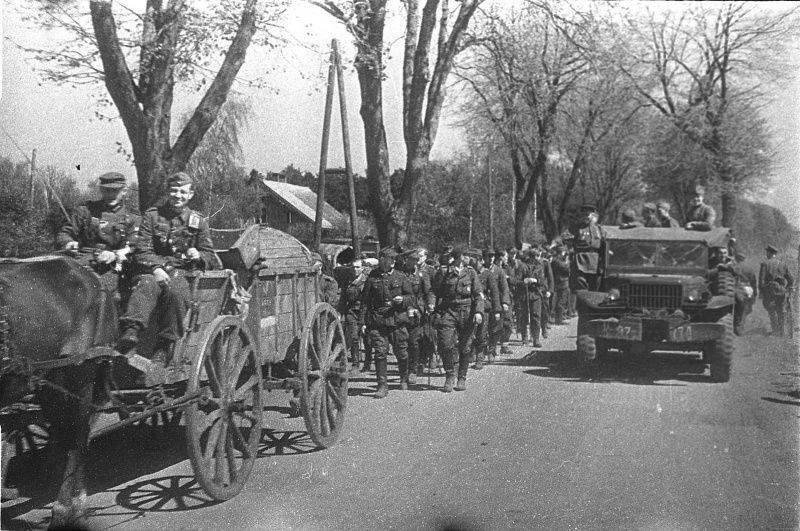
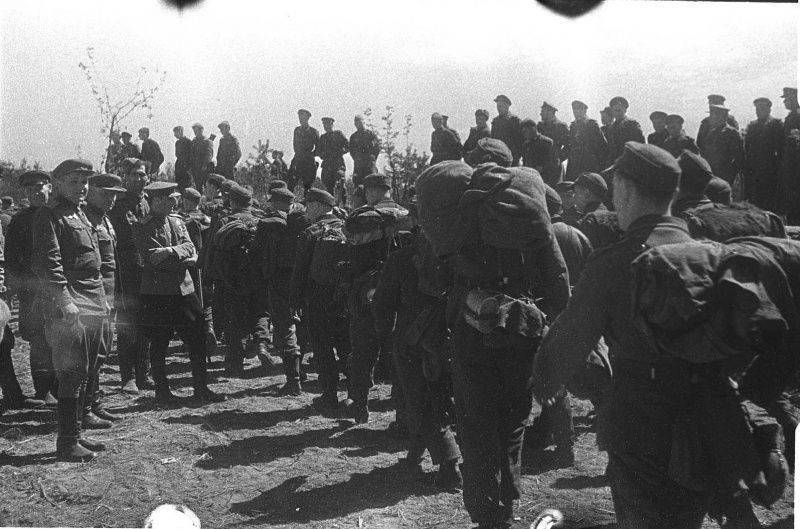
German prisoners march along the road in the area of the Frische-Nerung Spit
The Frische-Nerung Spit (the modern Baltic Spit), which separates the sea from the Frisches-Huff Bay, is about 60 km long. Its width ranges from 300 meters to 2 km. It was impossible to maneuver on it, so the Germans were able to create a dense defense and stubbornly fought back. The 83, 58, 50, 14, and 28 infantry divisions, as well as numerous separate units and subunits, were protected on the spit. They were supported by 15 tanks and self-propelled guns, more than 40 field, coastal and anti-aircraft artillery batteries.
Because of the narrowness of the spit, Soviet troops attacked the forces of the 1-2 divisions, regularly changing them to fresh ones. During 26 on April, troops of the 8 Guards Corps and airborne units captured the northern coast of the Frische-Nerung Spit, surrounded part of the German group, capturing about 4,5 thousands of people. However, the Germans continued to actively resist, taking advantage of the convenience of the terrain. The German defense, as well as on the Pilous Peninsula, had to be literally “gnawed through”. Some units of the enemy’s defense continued to resist for some time even in our rear. They were surrounded, and did not hurry to storm, in most cases, the Germans surrendered, after a certain period of time.
The German command, still hoping for a "miracle", continued to demand to stand to death. Heavy fighting continued for several more days. 11-I Guards army led heavy offensive battles for five days and advanced along the Frische-Nerung spit near 40 km. After that, parts of the 11 Guards Army were replaced by troops of the 48 Army. Fighting to destroy the German grouping on the Frische-Nerung spit and at the mouth of the Vistula (there were up to 50 thousand Nazis) continued until 8 in May, when the remnants of the German army (about 30 thousand people) finally capitulated.
Fighters of the Moscow Proletarian Division are firing at the enemy on the Frisch Nehrung spit. 1945
11-th Guards Army artillery crew fighting in the Frisch Nehrung spit
Soviet fighters-guards on the Frish Nehrung gulf after the defeat of the enemy. April 1945
Results
During the fighting on the Samland Peninsula, the troops of the 3 of the Byelorussian Front destroyed about 50 thousands of German soldiers and officers, captured about 30 thousands of people. On the Pillaus Peninsula and the Frische-Nerung Spit, only from 20 to 30 of April were remnants of 5 infantry divisions destroyed, 7 divisions (including tank and motorized) were defeated, not counting separate and special units and divisions. As trophies, around 1750 guns and mortars, about 5 thousand machine guns, about 100 aircraft, more than 300 warehouses with various military assets, etc. were captured. With the capture of Pillau, the Baltic Fleet received a first-class naval base. The liberated 3 armies of the Byelorussian Front could participate in the final battles of the Great Patriotic War.
East Prussia was completely liberated from the Nazis. The victory of the Red Army in East Prussia was of great moral and military strategic importance. Soviet troops captured Koenigsberg - the second most important military-political historical center of Germany. With the loss of East Prussia, the Third Reich lost one of the most important economic regions. Germany has lost the most important base of the German Navy and Air Force. The Soviet Baltic Fleet improved its position and basing conditions, having received such first-class bases, ports and harbors as Königsberg, Pillau, Elbing, Brandenburg, Kranz, Rauschen and Rosenberg. After the war, Pillau will become the main base of the Baltic Fleet.
German troops suffered a heavy defeat: more than 25 divisions were destroyed, 12 divisions were defeated, having lost 50-75% of manpower and equipment. German troops lost about 500 thousand people (of which 220 thousand were captured). The militiamen (volkshturm), police, Todt organization, Hitler Youth Service (their number was quite comparable with the Wehrmacht - about 500-700 thousand people) suffered high losses. The exact number of casualties of the German militia and militarized organizations is unknown. The loss of the 3 of the Byelorussian Front in the East Prussian operation is more than 584 thousand people (including more than 126 thousand people killed).
The battle in East Prussia lasted three and a half months (105 days). During the first stage, the powerful defense of the enemy was torn and the East Prussian group was divided into three parts: the Heilsberg, Königsberg and Zemland groups. Then the Red Army consistently crushed large centers of resistance of the enemy: the destruction of the Heilsberg group, the storming of Koenigsberg and the defeat of the Zemland group.
The Soviet Army retaliated for the imperial Russian army, which in 1914 suffered a heavy defeat in the forests and swamps of East Prussia. Historical retribution has happened. After the end of the war, the city of Königsberg and the surrounding areas became forever a part of Russia-USSR. Koenigsberg became Kaliningrad. Part of East Prussia was nobly transferred to Poland. Unfortunately, the modern Polish authorities have already forgotten about the blessings of Moscow in relation to the Polish people.
Soviet fighters on the Baltic Sea. East Prussia
Soviet fighters raise a toast to the victory. Koenigsberg. May 1945
Sources:
Balyazin V.N. Sturm Konigsberg. M., 1964 // http://may1945pobeda.narod.ru/shturm-m02-0.htm.
Vasilevsky A.M. A matter of a lifetime. M., 1978 // http://militera.lib.ru/memo/russian/vasilevsky/index.html.
Galitsky KN. In the battles for East Prussia. M., 1970 // http://militera.lib.ru/memo/russian/galitsky_kn/index.html.
Isaev A.V. Razgrom 1945. Battle of Germany. M., 2010.
History of the Great Patriotic War of the Soviet Union 1941-1945 (in 6 volumes). M, 1960-1965 // http://militera.lib.ru/h/6/index.html.
Lyash O. So Konigsberg fell. M, 1991 // http://militera.lib.ru/memo/german/lasch/index.html.
http://waralbum.ru/.
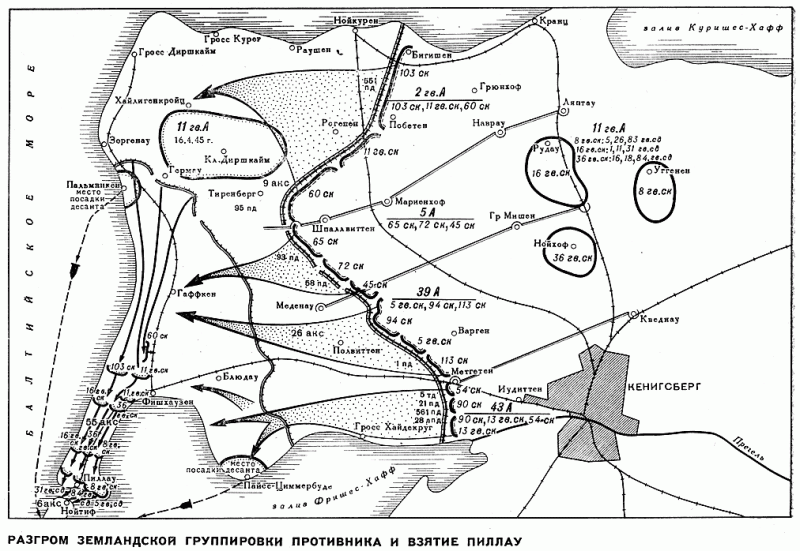
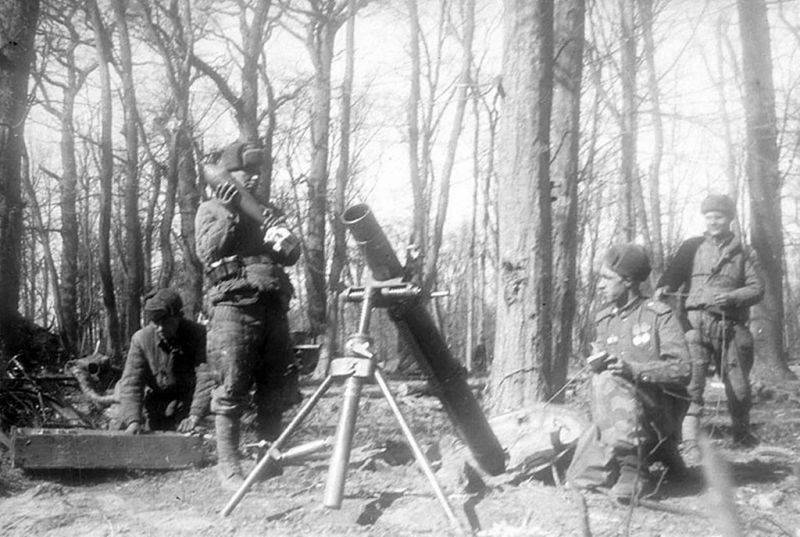
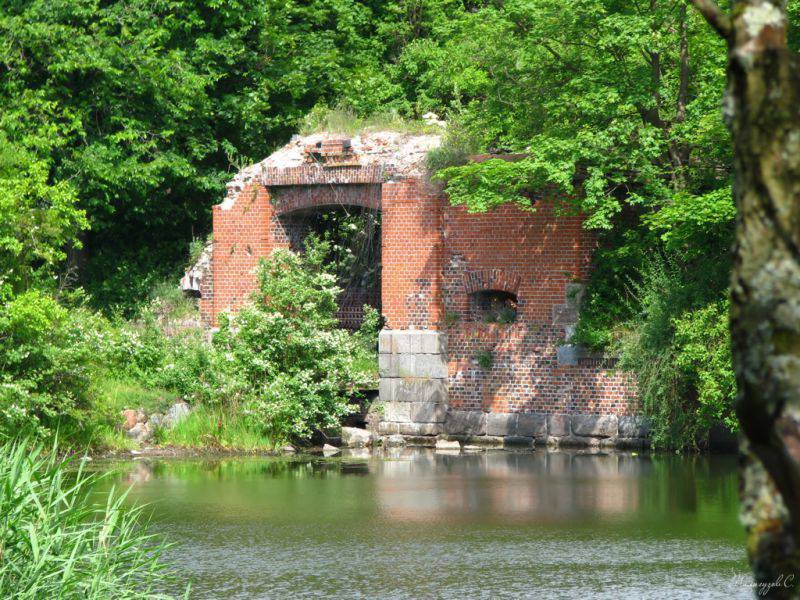

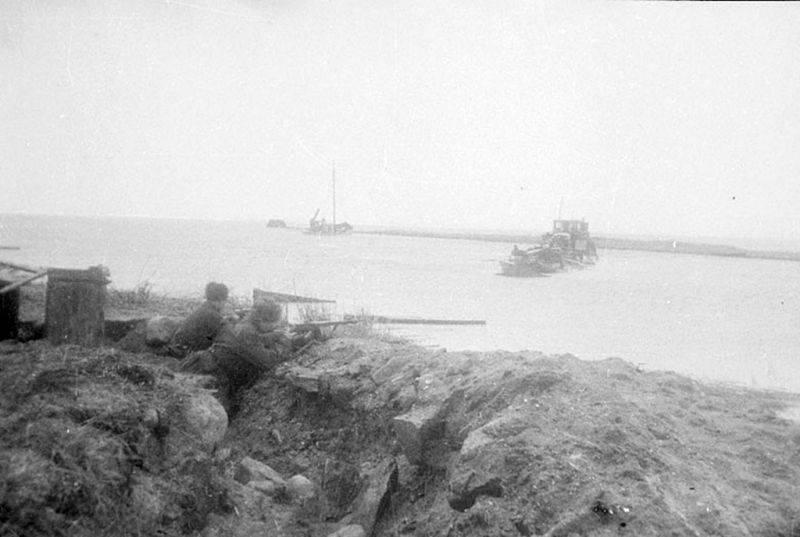
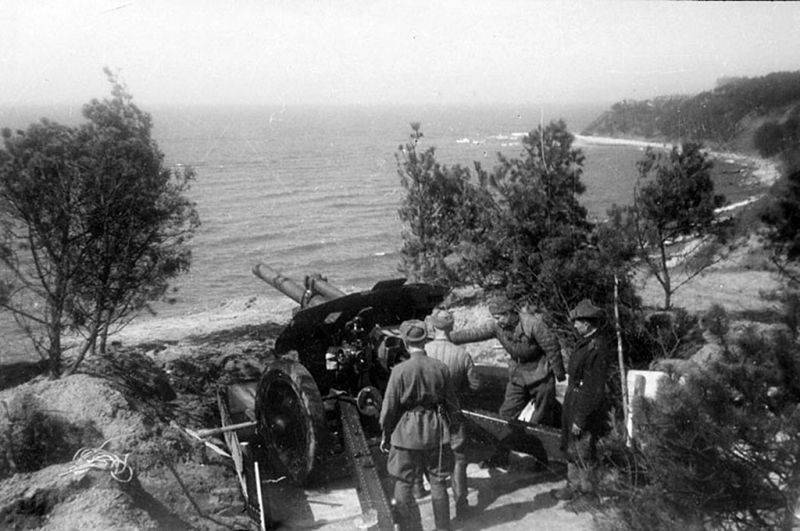
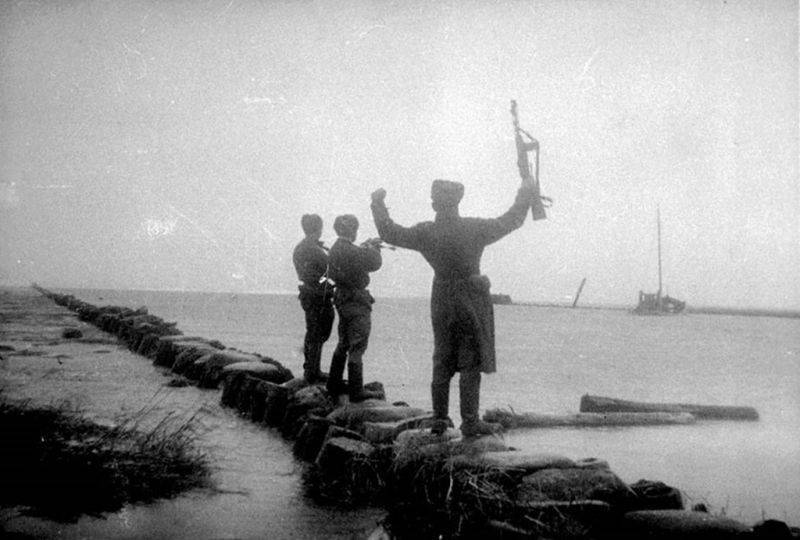
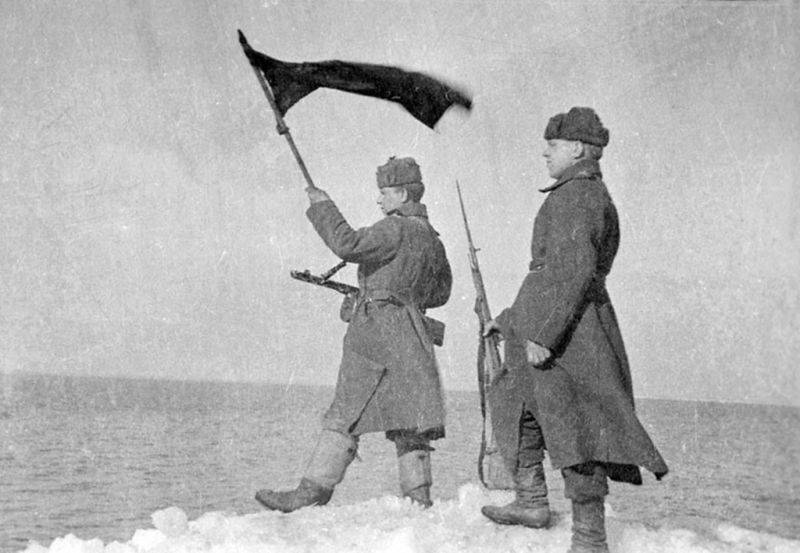
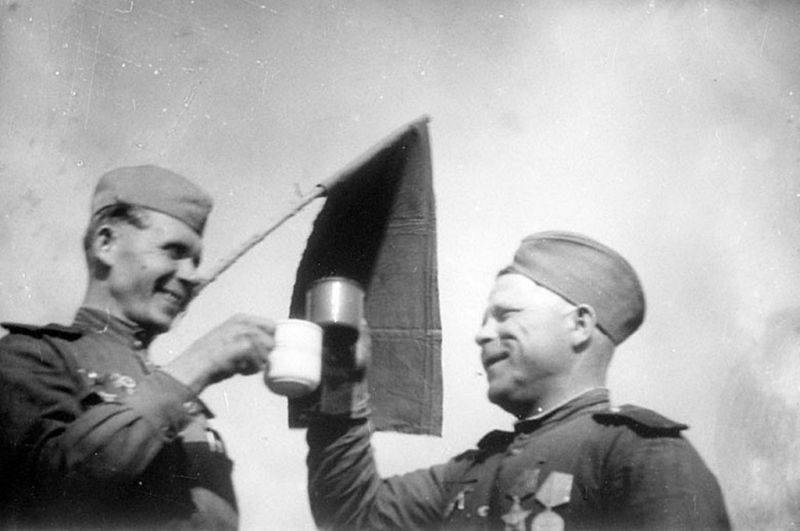
Information